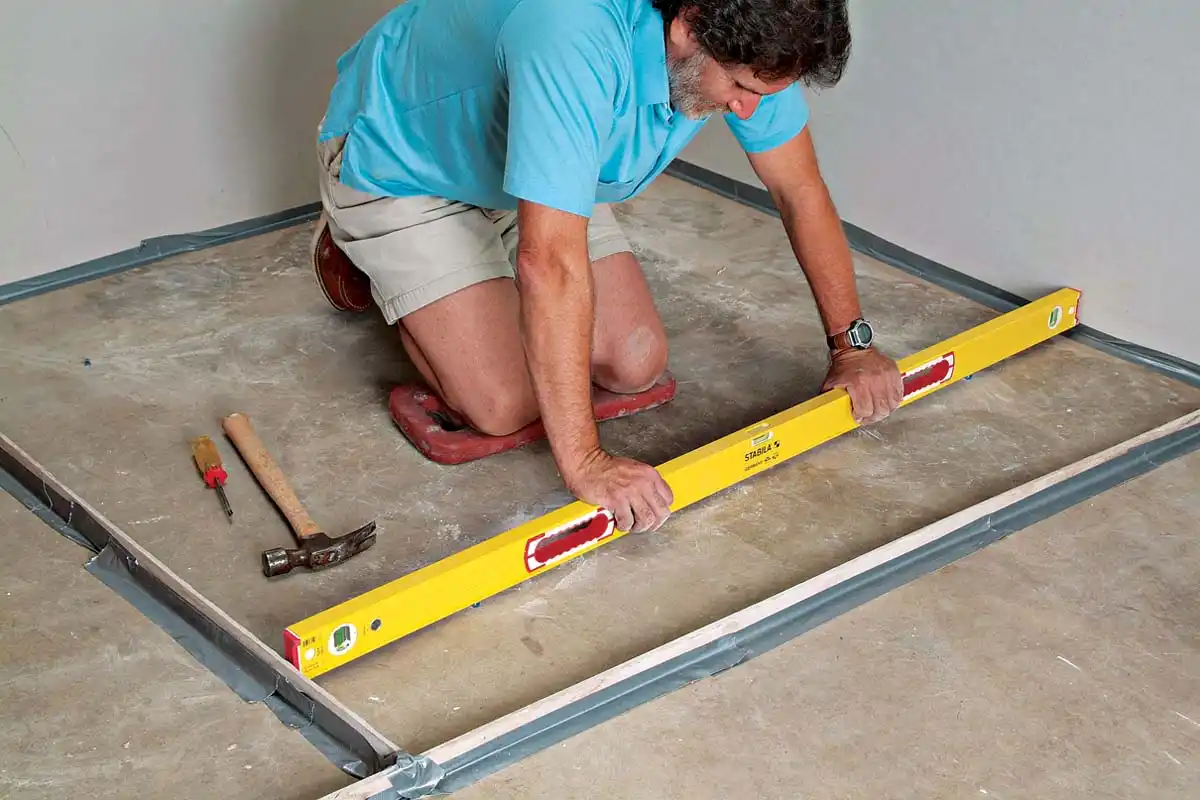Floor levelling is essential for maintaining a safe and aesthetically pleasing environment in any space. Traditional methods, such as shimming or using plywood, have their place but may only sometimes be the most efficient solution.
Self-levelling compounds are becoming increasingly popular for their ease of use and effectiveness. They allow homeowners to achieve a smooth surface with minimal effort. Alternative materials like cement boards or foam underlayment can also serve unique purposes for floor levelling.
Choosing between DIY solutions and professional services will depend on your skill level, budget, and time constraints. While taking on this project yourself might save money upfront, hiring professionals could ensure optimal results without the stress.
Each method has advantages and disadvantages; understanding these will help you make informed decisions about how best to tackle your floor levelling needs.
Traditional methods of floor leveling

Traditional methods of floor levelling have proven effective for many homeowners. One popular technique involves using plywood sheets to create a stable base. By layering these sheets strategically, you can effectively raise low areas and fill in gaps.
Another common approach is shimming. This method uses small wedges or strips of material placed under sagging floorboards to elevate them to a more even position. It’s a simple yet efficient way to tackle minor unevenness without extensive renovations.
Grinding is often employed on concrete floors. Skilled professionals use specialized equipment to shave down high spots, preparing an even surface for finishing touches like tiles or carpet.
Unconventional methods of floor leveling
Some homeowners explore unconventional floor levelling techniques when traditional methods aren’t cutting it. One intriguing approach involves using gypsum-based underlayments. These lightweight materials can adapt to various surfaces and provide a smooth finish.
Another method employs sand as a levelling agent. By pouring sand onto uneven areas and compacting it, you can create a stable base that allows for an even flooring surface above.
For those feeling adventurous, recycled rubber mats have gained popularity in certain circles. They help level floors and add sound insulation—a win-win situation!
Creating custom-built wooden shims offers flexibility in adjusting height discrepancies. This technique embraces creativity while ensuring structural integrity.
Using self-leveling compounds

Self-leveling compounds are a game changer for floor-leveling projects. These products are designed to flow and spread out, effortlessly filling in low spots.
When mixed with water, they create a smooth, pourable consistency. This allows them to find their own level without much intervention. The preparation of the surface is crucial for achieving optimal results.
They work well on various substrates, including concrete and wood. Once cured, self-levelling compounds provide a durable foundation that can accommodate tile or other flooring options.
They save time. Instead of labour-intensive manual shimming or layering materials, you mix and pour.
Alternative materials for floor leveling
Alternative materials can offer innovative solutions for floor levelling. One popular option is cork. This natural material provides a cushioning effect while also being eco-friendly. Cork’s ability to expand and contract makes it an excellent choice for areas with fluctuating temperatures.
Another intriguing option is recycled rubber flooring. Not only does it help level uneven surfaces, but it’s also durable and resistant to moisture. It’s perfect for basements or garages where spills might occur.
For those looking for a more traditional approach, consider using plywood sheets as levelling boards. They can be strategically placed under existing floors to create a flat surface without extensive renovation work.
Gypsum-based products are gaining traction due to their lightweight properties and ease of application. These materials bond well and provide a smooth finish that is ready for any flooring type above them.
DIY vs professional floor leveling services
Choosing between DIY and professional floor levelling services can feel overwhelming. Many homeowners consider tackling the project themselves to save money. You can do it if you have the right tools and materials. YouTube tutorials abound, guiding you through each step.
Floor leveling requires precision; even minor miscalculations can lead to bigger issues later. Hiring a professional might be wise if you need more confidence in your skills or need more experience.
Professionals bring expertise that ensures an even finish while saving you time and stress. They also have access to specialized equipment that may not be feasible for casual use at home.
Weighing cost against quality is crucial here. While a DIY approach is cheaper upfront, potential long-term costs from mistakes could outweigh initial savings.




